This post may contain affiliate links. Please read our disclosure policy.
Roasted winter squash is used in many Fall cooking recipes. Tender and flavorful winter squash can be enjoyed by itself as an easy side dish or it can be used in a variety of recipes. A little salt and pepper is the only seasoning needed.
The most popular varieties of winter squash butternut, spaghetti, acorn or carnival squash as well as pumpkin.
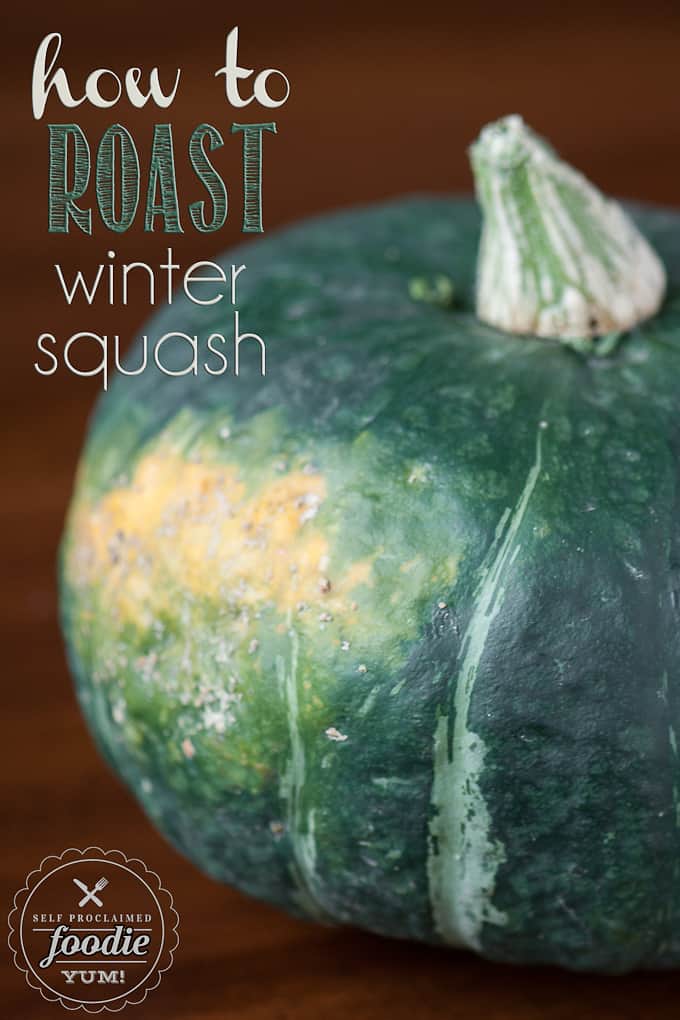
Why this recipe works:
There are a few recipe tips and tricks that make this roasted winter squash exceptional.
- My instructions can be applied to roasting any kind of winter squash.
- The baking times may vary depending on the size and thickness of the winter squash, but the process is basically the same.
- When you use this recipe, the result is a creamy soft flesh that can be eaten straight out of the shell or incorporated into a recipe.
Here’s how to make it:
- You must start by cutting the whole squash in half.
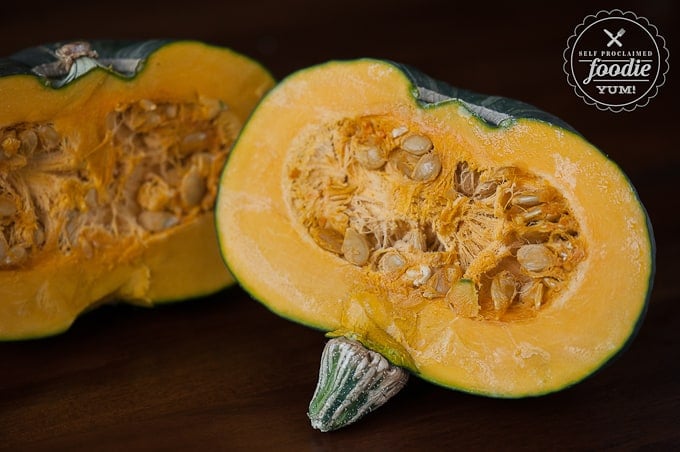
- Scrape out the seeds. You can separate the seeds from the pulp and roast them in the oven if you want.
- Then coat all of the flesh with olive oil.
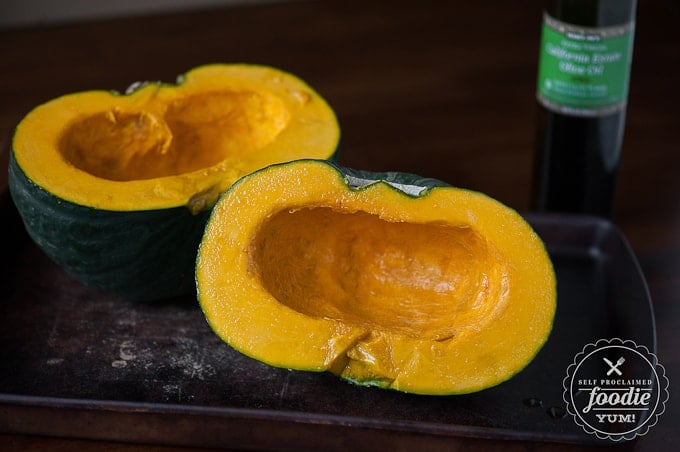
- I like to roast the winter squash face down on a baking sheet. The cut side, where the flesh meets the baking sheet, gets slightly browned and adds to the flavor. Feel free to line your baking sheet with parchment paper first for easy clean up.
- You can tell when it is done by piercing them with a knife. If the knife goes in without effort, its done. The skin will shrivel a bit too.
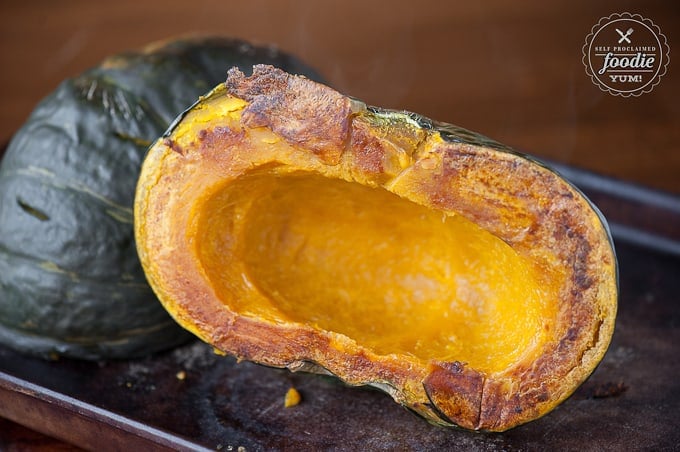
- Once the roasted squash is cool enough to handle, peel the skin away. Just look at that golden delicious goodness. YUM!
Cooking tips:
- Because cutting a large, hard, whole squash can be challenging, you can always throw the whole thing in the oven for about 15 minutes to allow it to soften a bit before cutting it.
- You can add the roasted squash to the food processor. If the mixture is too thick, you can thin it with some water or olive oil. Occasionally I have to use a scraper to push the chunks down, but otherwise it blends up nicely.
- Butternut squash can be especially difficult to cut when raw. An easier method is to first cut the top off right where the squash transitions from thin to fat. Then place the flat cut side down on the cutting board and cut each of those halves in half. This would result in four chunks instead of two.
- The smaller the squash and thinner the flesh, the less time it will take to roast. Just keep an eye on it and you’ll know when you have perfectly roasted squash when it smells wonderful, starts to brown, and a fork or butter knife can easily go into the flesh.
Related recipes:
Here are some of my favorite things to make with roasted winter squash.
- Stuffed Acorn Squash
- Savory Butternut Squash Cake
- Homemade Butternut Squash Ravioli with Brown Butter Sage Sauce
- Butternut squash mac and cheese
- Butternut Squash Lasagna
- Butternut Squash Soup
- Buttercup Squash Risotto
- Buttercup Squash Cake
- Winter Squash Casserole
Pin this now to save it for later
Pin ItHow to Roast Winter Squash
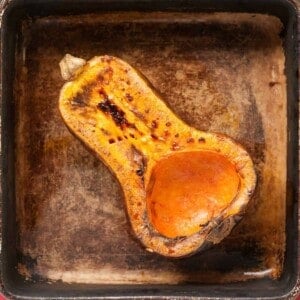
Ingredients
- whole Winter Squash butternut, acorn, buttercup, etc
- olive oil
Instructions
- Preheat oven to 400°F.
- With a large sharp knife, pierce whole Winter Squash near the stem, and insert the knife. Rock back and forth, cutting your way around the entire squash cutting all but the stem. Remove knife and break squash in half. Use knife to remove remaining stem.
- Use a spoon to discard seeds. If desired, you can remove pulp from seeds and roast them too.
- Rub the flesh of the squash with the olive oil. Place face down on a rimmed baking sheet. Bake, face down, in oven for 45 minutes to an hour. You'll know when the squash is done based on how easily a butter knife inserts into the flesh of the squash, and also based on the wonderful smell. When done, remove from oven and allow squash to cool on baking sheet.
- When cool enough to handle, cut squash into sections and remove skin.
- At this point you can serve the roasted squash as a side dish, cube it for a recipe, or puree it.
- To puree the squash, place peeled squash sections in a food processor. It is very thick so it occasionally needs to be re-positioned in the processor if it appears to not be thoroughly mixing. Pureed squash can be frozen in an air tight container or plastic freezer bag for future use.
Notes
Cooking tips:
- Because cutting a large, hard, whole squash can be challenging, you can always throw the whole thing in the oven for about 15 minutes to allow it to soften a bit before cutting it.
- You can add the roasted squash to the food processor. If the mixture is too thick, you can thin it with some water or olive oil. Occasionally I have to use a scraper to push the chunks down, but otherwise it blends up nicely.
- Butternut squash can be especially difficult to cut when raw. An easier method is to first cut the top off right where the squash transitions from thin to fat. Then place the flat cut side down on the cutting board and cut each of those halves in half. This would result in four chunks instead of two.
- The smaller the squash and thinner the flesh, the less time it will take to roast. Just keep an eye on it and you’ll know when you have perfectly roasted squash when it smells wonderful, starts to brown, and a fork or butter knife can easily go into the flesh.
Video
Nutrition
Nutrition information is automatically calculated, so should only be used as an approximation.
This post was originally created in October 2014 and has been updated with helpful information and cooking tips. Don’t worry – I didn’t change the recipe!

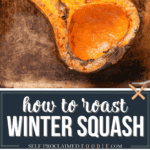
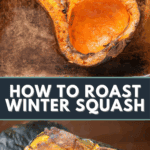
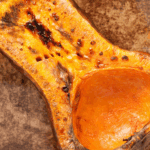
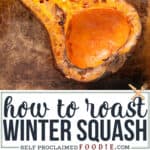

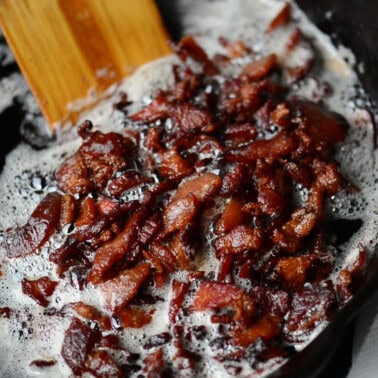
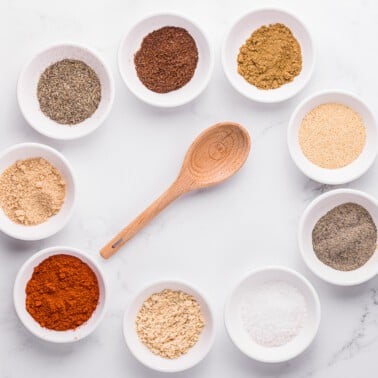

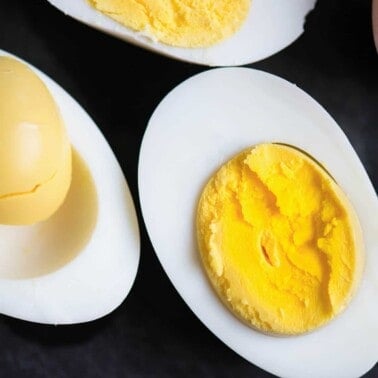









If I’m using butternut squash in soup, I stick it in the slow cooker on low overnight. The next morning, it’s ready to scoop and use.
Buttercup squash has been my favorite for years. I won’t buy it if I can get my thumb nail into the skin. The harder the skin the sweeter and drier the flesh! I only ever put butter on it.
Great tips! Thank you!
You should try cushaw as well. They are one of my favorite squash varieties.
Butternut squash is new to me! It’s definitely a recipe I’ll have to try.
I think it can be so daunting dealing with a heavy, hard-as-a-rock winter squash. This is a great post that makes it feel like something anyone can tackle! 🙂
I’ve never thought to cook a squash like this before! I’m usually intimidated and buy them precut at the grocery. Thanks for the confidence to make them at home!
I’ve never heard of this type of squash but definitely want to try it now!
I’ve always seen buttercup at the grocery but haven’t tried it yet. Thanks for the tips!
This was delicious and an easy way to make buttercuo squash. I just added a little butter and salt and it was perfect!
I must correct you on your allegation that “buttercup squash are not as sweet as other squash like butternut or carnival.” Buttercup and hubbard are the sweetest of the winter squash. If you obtained a buttercup squash that wasn’t sweet, then it was either picked immature or was picked from a vine that died from a disease (such as powdery mildew). A proper buttercup has the highest sugar content (brix %) of any winter squash. Acorn squash (of which, carnival is just one variety) have very little sugar, and thus acorn squash needs butter, brown sugar, and/or maple syrup to make it palatable. Butternut has some sweetness and may appeal to some in an unembellished state, but I prefer to blend it with a little sweetened condensed milk, nutmeg, and cinnamon to give it some more flavor.
Thanks for all the info!
I was just at the farm market trying to decide which of their varieties I should use: acorn, butternut, buttercup, carnival, and another variety I had never heard of. Thank you so much for this timely information. What a godsend you are! And to think, this is my first visit EVER to this site! I’ll be back!
Yay!!! Thanks for such a great comment! -Krissy